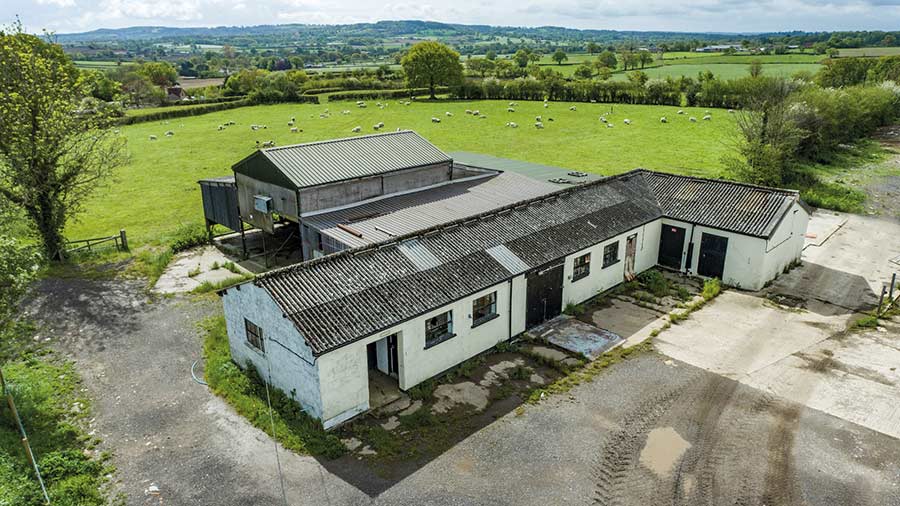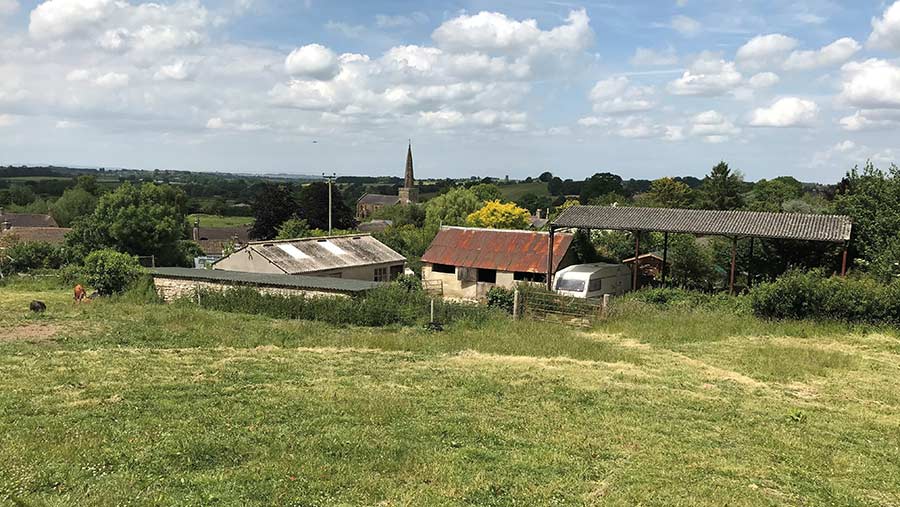Demand for disused barns and small blocks of land skyrockets
Farmers could benefit from the rising interest in rural living as buyers seek agricultural buildings with permission for conversion.
Identifying any redundant barns or livestock sheds that could be converted or sold to people looking to build their own houses may increase the number of interested parties.
Land agent Carter Jonas has recommended owners obtain planning permission before marketing the property for sale to maximise value.
uildings should be structurally sound and watertight, to be suitable for residential conversion.
See also: Four tenancies and two unusual sales on the land market
A stream of successful online auction sales over the summer has reinforced the demand for property with potential.
Carter Jonas said in July one barn with a four-acre paddock received nearly 50 bids and sold for £125,000 above its guide price.
The Barn at Parshalls Farm in Ilminster, Somerset, had permission for conversion to a four-bedroom dwelling and reached £355,000 at online auction.

Barn at Parshalls Farm © Carter Jonas
Jack Mitchell, associate partner at Carter Jonas, said: “There is a shortage of supply in the rural property market at the moment, which means buyers are being forced to be more openminded in terms of what they’re looking for, and they are prepared to pay more than they would have 18 months ago.
“Many can’t find the ideal house in the countryside, or have been priced out of it, which means they are open to considering a project.”
The strong bidding mirrored two similar auctions of barns with land and planning permission for residential conversion held earlier this year.
Two lots on Skillgate Lane at Stoke-Sub-Hamdon, Somerset, that totalled 0.72 acres sold for £405,000, against a guide price of £350,000.

Barn at Skillgate Lane © Carter Jonas
“Changes to permitted development rights [PDR] for agricultural buildings have opened up opportunities for such developments,” Mr Mitchell said.
“However, there are still buildings out there that could potentially be converted and their owners may not be aware of the lucrative opportunities.”
Although buyers are searching for a private plot, the majority are only looking to purchase a small area of land, with many preferring to spend that money on the building work instead.
“An acre or two is often the ultimate in added value,” he said.
Seek professional advice
Before selling a building for development, farmers are advised to seek professional advice to ensure they’re aware of the practicalities.
Nicola Quick, associate at Carter Jonas, said: “Class Q PDRs have opened up opportunities for modern buildings that historically would never have secured consent to be converted into a residential dwelling.
“However, there are a number of details to be considered before applying for permission to convert a building. Some agricultural buildings cannot be converted because they are not structurally capable of conversion.
“The location is also important – for example, you cannot obtain Class Q consent for buildings located in national parks or areas of outstanding natural beauty.
“The proposal also needs to retain as much of the existing fabric of the original building as possible and not extend it in any way.”
As well as ensuring the building in question is structurally suitable, there are other factors to consider.
The building must have been in agricultural use on 20 March 2013 and agricultural permitted development rights must not have been used for the erection of other agricultural buildings on the holding since then.
“You must also consider access, highways, contamination, noise, flood risk and whether it is practical and desirable where it is,” she said.
In order to achieve planning permission, in some circumstances landowners have been required to agree to no longer use their agricultural buildings for livestock if they are in close proximity to the proposed dwelling.
Farmers should consider the implications it could have for their business before selling their buildings or land.
The Barn at Parshalls Farm received the necessary permissions in 56 days. A Class Q (a) change of use application can cost as little as £96 or £206 for (b) change of use plus building operations.
The full process, including structural reports and design drawings, is unlikely to cost more than £10,000, plus VAT.
“The Barn was then sold at auction, with completion due within 28 days of the auction,” Mrs Quick said. “It’s a very efficient way of selling off an asset and releasing funds for other projects.”
